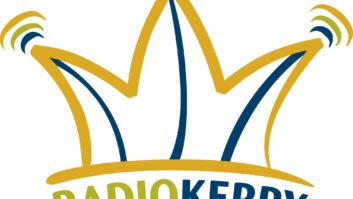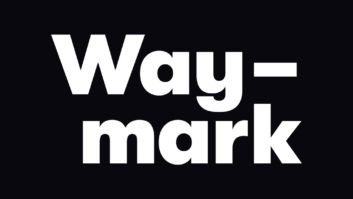
Joan Baker It all seems so logical and straightforward, doesn’t it? Take your existing skill set as on-air radio talent or an engineer, say good-bye to the crazy hours and crazier management of radio-land and find a career doing voice work from home.
So before this week’s new owner changes the format again, read on about your new career path … and consider signing up for Joan Baker’s V/O course.
A broadcaster’s dream: “If I’m on the air live and my mouth doesn’t convey what my mind intends, oh, please, let the results be funny.” Voice talent Joan Baker had that prayer answered when she dropped a world-class Spoonerism while announcing Will Smith’s nationally televised tribute show.
Baker enthusiastically introduced actor and presenter Bill Pullman as “Bull Pillman!” The audience howled at the gaffe, with honoree Smith leading the laughter. The newly anointed “Bull” ran with the gag and brought down the house.
A career breaker? Hardly. While Baker’s flub is now immortalized all over YouTube, the moment became an asset for the author of the book “Secrets of Voiceover Success!” She retrains established radio talent plus fresh-faced wannabes on the intricacies of voice acting.
“There are a lot of mistakes that happen in voiceover,” said Baker. “But I was lucky that people thought this one was laughable.”
The New York-based voice actor, coach and author is funny; but there’s a serious side, too. Her work includes narration for the William Jefferson Clinton Presidential Library, a national ad campaign for the Muhammad Ali Center and tags, spots, narration and promos for clients like ABC News, NBC, HBO, Oprah.com and Grand Theft Auto III/IV.
Baker spoke with Radio World from her V/O booth in Manhattan via an ISDN hookup to San Francisco. She joked about the image of “bathrobe broadcasting” from home, the casual, easy-money image of professional V/O work.
RW: How would you break down your voice training technique?
Baker: I break it down into three categories: speech and diction; craft and acting technique; and just “letting go.”
RW: Explain.
Baker: For “Speech and Diction” one of the first things I do is to quickly assess the student’s speech for any regionalisms or patterns that are outside the rules of “Standard American Speech.” The rules are quite extensive. I recommend Edith Skinner’s “Speak with Distinction” as the bible of speech and diction. The nation’s top acting schools and universities use this book as the ultimate teaching aid.
“Craft and Technique” is the fun part and it constitutes probably 80 percent of the training I do with students. Essentially, I teach students how to prepare themselves such that they can embody the intention of the script, allowing the preparation to give life to performance. This is the basic principal behind acting.
A big difference, however, is that actors generally have other actors to play off of. It’s easier in some ways when you have other actors helping to create a certain reality in which you are a player. In the voiceover booth, however, you must create the whole of the reality: your character and the characters to whom you are speaking.
And then there’s “Letting Go.” This is a personal one-on-one process of teaching people to let go of mental and emotional barriers that suppress vocal expression.
Part one of Letting Go is to increase one’s freedom around personal self-expression, which is always mirrored in the performance. Another aspect of Letting Go is developing a unique awareness of your body and the specific elements of the vocal apparatus just as a singer would. You get the best results when you learn to use your whole body as a supporting foundation for your thoughts, feelings and vocalization.
RW: Is there a “Joan Baker” sound?
Baker: Definitely — in the same way that there’s a Joan Baker fingerprint.
In the typical sense, by “sound” one refers to a known vocal quality that is recognizable, e.g., James Earl Jones’ “This is CNN” or his breathy Darth Vader voice. This sort of recognition is achieved as much by repetition in the marketplace as by a distinctive vocal quality.
However, the really instructive aspect of this question has to do with something each and every successful voiceover artist comes to understand, the unique nature of his or her particular vocal instrument.
RW: Do you “eat the mic”?
Baker: To clarify, “to eat the mic” refers to a vocal quality that’s simply breathtaking — extraordinary — a voice that people enjoy listening to just for its own sake.
This quality can be quite natural for some actors but it’s useless without the extensive training required to handle the variety of styles and characters one must negotiate over the course of a successful voiceover career.
On the other hand, a voice with such extraordinary attributes is not what most voiceover work calls for. Voiceover work calls mostly for a sound that is natural, approachable and “real.” Products are best sold with a certain undercurrent of the “word of mouth” variety, as the audience feels more comfortable hearing from a person who sounds familiar as opposed to a voice that sounds incredible.
RW: Do you need an audience or do you work alone?
According to Joan Tips for breaking into voice-overs.
- Study the craft with a reputable teacher who is also a working union voiceover actor and signed with a top talent agent.
- Explore speech and diction training to eliminate any regionalisms that may be in the way of standard American speech.
- Work with a seasoned producer and director to produce a demo reel.
- Send your demo reel by CD, DVD and MP3 to every voiceover agent in the book. The book is the Ross Reports.
- Network your a** off and continually find ways to introduce and reintroduce yourself to the top agents and anyone (producers, directors, copywriters) who might have reason to consider casting you now or in the future.
- Start a Web site or MySpace page where you can post your demo and professionally considered info about yourself. Then reach out to “friend” as many producers, directors and copywriters as you can find.
- Be very, very patient.
- Never stop training and practicing.
Baker: I love an audience, whether it’s a one-person audience or a group audience. There’s almost always an audience in the form of your director/producer and a few clients that may be in the room during a session. You’re certainly aware of them, which adds a positive urgency to your work. I create a performance for the audience who will be listening on radio or TV. The director and producers are simply there to approve the V/O artist’s interpretation of the copywriter’s material for the benefit of the client.
RW: Tell us about you radio career.
Baker: I was a performer with a group on WBAI Radio, Pacifica 99.5 FM in New York City, called the Collective Unity Creative, for six years. We did radio drama and wrote spoofs about current events of the day, plus doing interviews with top artists, performers and musicians.
RW: Do you actually wear a bathrobe in your recently completed home studio?
Baker: This is a funny idea that suggests the notion of a super-easy career, but I don’t buy into it.
First, I’m in my Manhattan office, so no, I don’t work in a bathrobe and slippers.
People who work at home still have to go out and buy groceries, pick up the kids from school, so I suppose they may as well get dressed for the day.
More importantly, success in the voiceover business requires networking and face time with key people; it’s an ongoing process.
So, while a home studio is an important tool to have, you will still have to be out there interacting with the industry people on the networking level. Perhaps this is where the bathrobe would work.
Just kidding.
Contact Joan Baker via her Web sitewww.joanbaker.tv.











